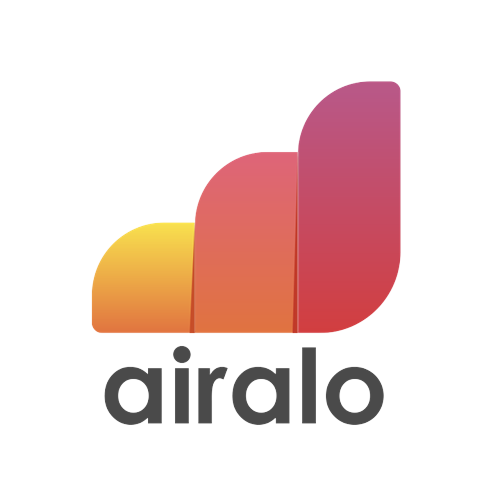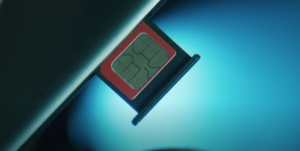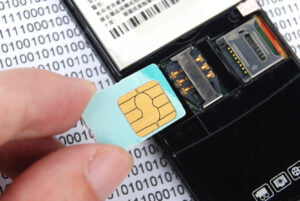CDMA and GSM are two different technologies used by carriers in mobile communication. Understanding the differences between CDMA and GSM is crucial, especially when choosing a new carrier or considering coverage options. CDMA (Code Division Multiple Access) and GSM (Global System for Mobiles) use different channels to transmit data and voice signals.
While CDMA assigns each user a unique code, GSM uses time-division multiplexing. These variations impact how carriers operate and can affect signal quality, coverage, and compatibility with different devices.
Understanding the Importance of Phone Bands (GSM, CDMA)
Explanation of phone bands in relation to GSM and CDMA networks
Phone bands play a crucial role in determining the compatibility of your cell phone with different networks. When we talk about GSM and CDMA carriers, we’re referring to two different technologies used by mobile network operators. Each technology operates on specific frequency bands, which are essentially ranges of radio frequencies that carry signals for voice calls and data transmission.
Significance of compatible phone bands for network compatibility
To ensure your new phone works seamlessly with your chosen carrier, it’s important to consider the supported frequency bands. If your phone doesn’t support the correct bands used by a particular carrier, you may experience limited or no service at all. It’s like trying to communicate with someone who speaks a completely different language – you won’t be able to understand each other!
Impact of phone bands on call quality and data speeds
The phone band compatibility also affects call quality and data speeds. Different frequency bands have varying characteristics that can impact signal strength, coverage, and capacity. For example, lower-frequency bands often provide better coverage over longer distances but may have slower data speeds compared to higher-frequency bands.
Having a device that supports multiple frequency bands gives you more flexibility when choosing a carrier or switching between them. You’ll have access to a wider range of coverage options and potentially faster data speeds depending on the available network technologies in your area.
Key Differences Between GSM and CDMA Networks
Distinct Network Architectures of GSM and CDMA Systems
GSM (Global System for Mobile Communications) and CDMA (Code Division Multiple Access) are two different network technologies used by carriers around the world. One major difference between them lies in their network architectures.
- GSM: GSM networks use a cell-based architecture, where each cell has its own base station that handles communication within that specific area. This allows for better coverage and capacity management as cells can be easily added or removed as needed.
- CDMA: On the other hand, CDMA networks utilize a spread spectrum technology, which allows multiple users to share the same frequency band simultaneously. In this system, all users transmit their signals at the same time but with different codes, making it possible to separate and decode individual calls.
Varied Approaches to Voice Transmission in GSM and CDMA Networks
Another key distinction between GSM and CDMA lies in how they handle voice transmission.
- GSM: In GSM networks, voice information is digitized and compressed using a standard codec before being transmitted over the airwaves. This results in higher call quality compared to traditional analog systems.
- CDMA: In contrast, CDMA networks convert voice into digital data by assigning a unique code to each conversation. This code is then mixed with other conversations using mathematical algorithms. As a result, CDMA offers improved call quality even in areas with weak signal strength.
Different Methods Used for Handling Multiple Calls Simultaneously
GSM and CDMA employ distinct methods:
- GSM: GSM uses Time Division Multiple Access (TDMA), which divides each frequency channel into time slots, allowing multiple users to share the same frequency without interfering with one another.
- CDMA: Conversely, CDMA utilizes Code Division Multiple Access (CDMA), where each call is assigned a unique code. This enables multiple calls to be transmitted simultaneously over the same frequency band, increasing network capacity.
Evolution of Mobile Communication Technologies: CDMA and GSM
The historical development of both CDMA and GSM technologies has revolutionized the world of mobile communication. Let’s delve into the advancements brought by CDMA technology and the evolutionary milestones in GSM networks.
Advancements in Mobile Communication with CDMA Technology
CDMA (Code Division Multiple Access) technology has played a significant role in improving mobile communication. It introduced several key advancements:
- Increased Capacity: CDMA allows multiple users to share the same frequency band simultaneously, resulting in increased capacity for voice calls and data transmission.
- Enhanced Voice Quality: With CDMA, users experience improved voice quality due to reduced background noise and interference.
- Better Call Security: CDMA employs encryption techniques that enhance call security, protecting user privacy.
- Efficient Data Transfer: CDMA enables faster data transfer rates, facilitating seamless internet browsing, video streaming, and downloading on mobile devices.
- Smooth Handoffs: CDMA ensures seamless handoffs between cell towers during phone calls or data sessions, minimizing call drops or interruptions.
Evolutionary Milestones in GSM Networks
GSM (Global System for Mobile Communications) networks have also witnessed significant evolution over time. Here are some notable milestones:
- Introduction of Digital Technology: GSM marked a shift from analog to digital technology, enabling clearer voice calls and better signal quality.
- SMS Messaging: GSM introduced Short Message Service (SMS), allowing users to send text messages quickly and efficiently.
- Internet Connectivity: Over time, GSM networks evolved to support GPRS (General Packet Radio Service) and EDGE (Enhanced Data rates for GSM Evolution), providing basic internet connectivity on mobile phones.
- Multimedia Capabilities: The introduction of 3G and 4G technologies enabled GSM networks to offer multimedia services such as video calling, high-speed internet access, and media streaming.
- Global Roaming: GSM’s widespread adoption and standardized network protocols made it easier for users to roam globally, ensuring seamless connectivity across different countries.
The continuous evolution of CDMA and GSM technologies has paved the way for modern mobile communication. These advancements have transformed our phones into powerful devices that connect us with the world at our fingertips.
Exploring the Role of SIM Cards and LTE in CDMA and GSM
In the world of mobile communication, SIM cards play a crucial role in both CDMA and GSM systems. These small chips, which stand for Subscriber Identity Module, are responsible for storing important information about your phone number, carrier network, and even contacts.
Functionality and Purpose of SIM Cards in CDMA and GSM Systems
In CDMA networks, such as Verizon or Sprint, SIM cards are used primarily for 4G LTE connectivity. While voice calls and text messages are transmitted over the CDMA network itself, data connections rely on the LTE technology integrated with these networks. The SIM card provides access to this LTE connection by authenticating your device on the network.
On the other hand, in GSM networks like AT&T or T-Mobile, SIM cards serve a more comprehensive purpose. They not only provide access to LTE connectivity but also handle voice calls and text messages on the edge network connection. In these systems, the SIM card contains all the necessary information to identify you as a subscriber to the network.
Integration of LTE Technology with CDMA and GSM Networks
Both CDMA and GSM networks have embraced LTE technology to enhance data speeds and improve overall network performance. This integration allows users to enjoy faster internet browsing, smoother video streaming, quicker downloads, and a more reliable edge network connection.
However, it’s important to note that not all devices support both CDMA and GSM networks simultaneously due to differences in hardware compatibility. Some devices may be specifically designed for one type of network or may require different model numbers depending on whether they are intended for use with a CDMA or GSM carrier.
Implications on Device Compatibility Due to SIM Card Usage
The usage of SIM cards has implications on device compatibility across carriers. If you have a device that is locked to a specific carrier through software settings or restrictions imposed by the manufacturer, it may not work properly when you switch carriers or insert a different carrier’s SIM card.
Before making any changes, it’s always a good idea to check the compatibility list provided by your carrier or consult with customer support. They can guide you through the process and ensure that your device is compatible with the network you wish to switch to.
Comparing Data Speeds and Simultaneous Usage in CDMA vs GSM
Differences in Data Speeds
CDMA (Code Division Multiple Access) and GSM (Global System for Mobile Communications) networks differ in their data speed capabilities. CDMA technology allows for faster data speeds, with the potential to reach up to 3.1 Mbps (megabits per second). On the other hand, GSM networks typically offer slower data speeds, with a maximum of around 384 Kbps (kilobits per second).
Simultaneous Voice/Data Usage
There is a distinction between CDMA and GSM systems. In CDMA networks, users can make calls and access data simultaneously without any issues. This means you can browse the internet or use apps while having an ongoing call on a CDMA network.
However, GSM networks follow a time division approach where voice and data are transmitted alternately rather than simultaneously. This means that when you’re on a call using a GSM carrier, your data connection may be temporarily paused until the call ends.
Impact on User Experience
The difference in data speeds between CDMA and GSM networks can have an impact on user experience. With faster data speeds offered by CDMA technology, users can enjoy smoother streaming, quicker downloads, and overall better performance for data-intensive tasks such as video streaming or online gaming.
On the other hand, slower data speeds provided by GSM networks may result in slower loading times for webpages or buffering issues during video playback.
In terms of simultaneous voice/data usage, CDMA’s capability allows for seamless multitasking without interruptions. However, with GSM’s time division approach, users may experience temporary pauses in their internet connection while making or receiving calls.
Future Outlook: Predictions for CDMA and GSM Technologies
Adoption Rates and Industry Changes
The future of CDMA and GSM technologies is a topic of great interest, with many speculating on the adoption rates and potential changes within the industry. While it is challenging to predict with absolute certainty, there are some forecasts that can be made based on current trends.
- Adoption Rates: It is expected that the adoption rate of CDMA technology will continue to decline in favor of GSM. This can be attributed to several factors, including the global standardization of GSM, its compatibility with 4G and 5G networks, and the increasing availability of affordable GSM devices.
- Industry Changes: As technology continues to evolve rapidly, both CDMA and GSM carriers will need to adapt to stay relevant. One potential change could be the integration of CDMA technology into existing GSM networks or vice versa. This could lead to improved coverage and network efficiency for customers.
Coexistence or Dominance?
Another aspect worth considering is whether CDMA and GSM will coexist or if one technology will eventually dominate over the other.
- Coexistence: It is possible that both technologies may coexist in certain regions or niche markets where specific requirements necessitate the use of either CDMA or GSM. For example, some remote areas might rely on CDMA due to its superior range capabilities.
- Dominance: However, it seems more likely that GSM will ultimately dominate as a global standard due to its widespread adoption and compatibility with newer generations of mobile networks. The transition from CDMA to GSM has been prevalent in many parts of the world already.
While these predictions provide insight into what may happen in the future, it’s important to note that technological advancements can often surprise us with unexpected developments.
Evaluating Pros and Cons of CDMA vs GSM
In conclusion, understanding the differences between CDMA and GSM networks is crucial when choosing a carrier for your mobile phone. While CDMA offers better call quality and coverage in rural areas, GSM provides more flexibility with SIM cards and international roaming. Both technologies have their strengths and weaknesses, so it ultimately comes down to your specific needs and preferences.
To make an informed decision, consider factors such as the regions you frequently travel to, the importance of data speeds, and the compatibility of your device with different network types. Keep an eye on future developments in CDMA and GSM technologies as they continue to evolve.
Ultimately, the choice between CDMA and GSM carriers is yours. Take into account what matters most to you – whether it’s reliable voice calls or global connectivity – and select a carrier that aligns with your requirements. Remember to research different carriers’ coverage maps, customer reviews, and pricing plans before making a final decision.
FAQs
Can I switch my phone from a CDMA carrier to a GSM carrier?
Yes, it is possible to switch your phone from a CDMA carrier to a GSM carrier if your device is compatible with both network types. However, some phones are designed specifically for either CDMA or GSM networks, so ensure that your device supports the desired network before making the switch.
Will I experience any differences in call quality between CDMA and GSM?
While call quality can vary depending on several factors like signal strength and network congestion, generally speaking, CDMA networks tend to offer better call quality due to their use of wider frequency bands. However, advancements in technology have narrowed this gap significantly over time.
Can I use my SIM card internationally with both CDMA and GSM carriers?
Generally speaking, using a SIM card internationally is easier with GSM carriers since they utilize SIM cards for authentication purposes. CDMA carriers may require additional steps or specific international roaming plans to use your phone abroad.
Are CDMA or GSM carriers more prevalent worldwide?
GSM networks are more widely used globally, especially in Europe and many parts of Asia. However, CDMA networks still have a significant presence in certain regions like North America and some parts of Asia.
Can I keep my phone number when switching between CDMA and GSM carriers?
In most cases, you can keep your phone number when switching between CDMA and GSM carriers as long as you follow the necessary porting procedures. Contact your new carrier for specific instructions on how to transfer your number during the switch.





